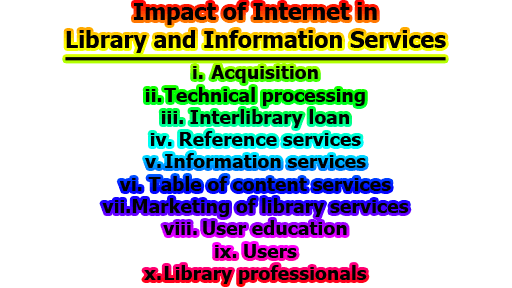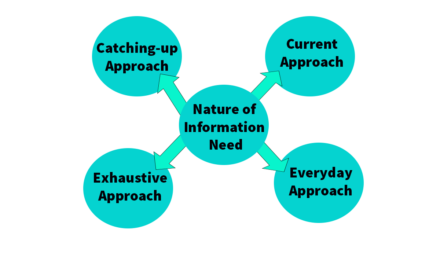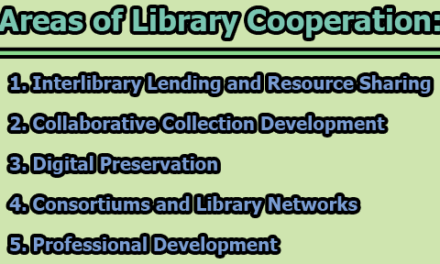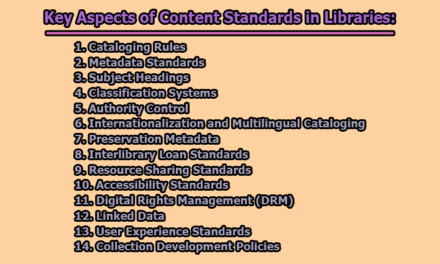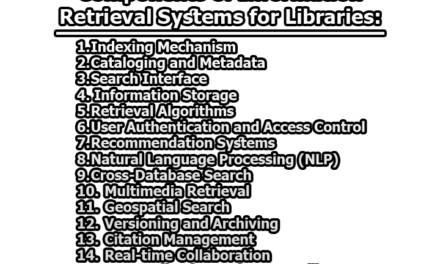Impact of Internet in Library and Information Services:
The internet has had a significant impact on libraries and information services across the world. In this article, we will discuss how the internet has influenced various aspects of library and information services such as acquisition, technical processing, interlibrary loan, reference services, information services, table of content services, marketing of library services, user education, users, and library professionals.
i. Acquisition: The internet has changed the way libraries acquire new resources. With the availability of electronic resources, libraries can purchase and access materials from different parts of the world, eliminating the need for the physical transfer of books or documents. The availability of digital collections has allowed libraries to create online databases that offer access to a vast array of resources.
ii. Technical processing: The internet has also changed the way libraries process and catalog materials. Cataloging of electronic resources is now a common practice, and libraries can provide instant access to materials as soon as they are received. With electronic resources, libraries can create more accurate and consistent catalog records while also reducing the time required to process materials.
iii. Interlibrary loan: The internet has made it easier for libraries to provide interlibrary loan services. With the ability to access electronic resources, libraries can share materials with each other more efficiently, reducing the time required to obtain materials from other libraries. Electronic document delivery has also reduced the need for physical transfers of documents, making interlibrary loan services faster and more efficient.
iv. Reference services: The internet has had a significant impact on reference services provided by libraries. The availability of online databases, search engines, and other digital resources has made it easier for users to locate information. Libraries have also created online reference services, allowing users to ask questions and receive answers from librarians via email, chat, or other online communication methods.
v. Information services: The internet has also changed the way libraries provide information services. With the availability of electronic resources, libraries can offer access to a vast array of materials, including ebooks, journals, and databases. Libraries can also create online research guides and tutorials to help users locate and use information effectively.
vi. Table of content services: The internet has enabled libraries to offer a more comprehensive table of content services. Libraries can now provide access to the tables of contents of thousands of journals and books, allowing users to quickly locate relevant information. Libraries can also use technology to send alerts to users when new content is available in their areas of interest.
vii. Marketing of library services: The internet has also influenced the way libraries market their services. Libraries can use social media platforms and other online communication channels to promote their services and reach out to potential users. They can also create online tutorials and guides to demonstrate the value of their services to users.
viii. User education: The internet has made it easier for libraries to provide user education services. Libraries can create online tutorials and webinars to help users locate and use information effectively. They can also offer remote training sessions to users who are unable to attend in-person training sessions.
ix. Users: The internet has changed the way users interact with libraries. With the availability of electronic resources, users can access materials from anywhere at any time. They can also communicate with librarians online and receive answers to their questions quickly.
x. Library professionals: Finally, the internet has influenced the way library professionals carry out their duties. Librarians must keep up to date with changes in technology and be able to use online resources effectively. They must also be familiar with the latest trends and developments in library and information services.
In conclusion, the internet has had a profound impact on libraries and information services, changing the way libraries acquire, process, and provide access to resources. The internet has also made it easier for libraries to offer a wide range of services to users, including interlibrary loans, reference services, information services, and user education. Additionally, the internet has influenced the way libraries market their services and how users interact with libraries. Lastly, the internet has impacted the way library professionals carry out their duties, requiring them to stay up to date with changes in technology and the latest trends in library and information services. As the internet continues to evolve, libraries will need to adapt and incorporate new technologies and services to meet the needs of their users. They will also need to continue to provide high-quality services and resources while navigating the challenges and opportunities presented by the digital age.
References:
- Bishop, A. P. (2013). The impact of the Internet on libraries. The Internet and higher education, 16, 1-5.
- Chaudhary, A. (2018). The Impact of Internet on Library and Information Services. Journal of Advances in Library and Information Science, 7(1), 55-62.
- Besara, R., & Simpson, J. (2011). Interlibrary loan and document delivery in the age of the Internet. Reference services review, 39(4), 555-571.
- Evans, G. E. (2015). The changing nature of reference services in the digital age. Reference and user services quarterly, 55(4), 251-258.
- Colón-Aguirre, M., & Fleming-May, R. A. (2012). Online information services in public libraries: A study of user expectations. Library & Information Science Research, 34(1), 20-27.
- Sheth, J. (2014). Impact of the internet on table of contents services in academic libraries. Journal of Library Metadata, 14(1), 1-20.
- Liu, Z. (2012). Marketing library services in the digital age. Journal of Library Administration, 52(6-7), 471-485.
- Karn, S. K. (2015). User education in the digital age: challenges and opportunities. International Journal of Information Dissemination and Technology, 5(1), 30-34.
- Borgman, C. L., & Hirsh, S. G. (2015). The evolving landscape of library and information services: What do we know? What do we need to know? The Library Quarterly, 85(2), 107-126.
- Hirsh, S. G. (2017). Library and information science professionals in the digital age. Library Hi Tech, 35(4), 546-558.

Library Lecturer at Nurul Amin Degree College

